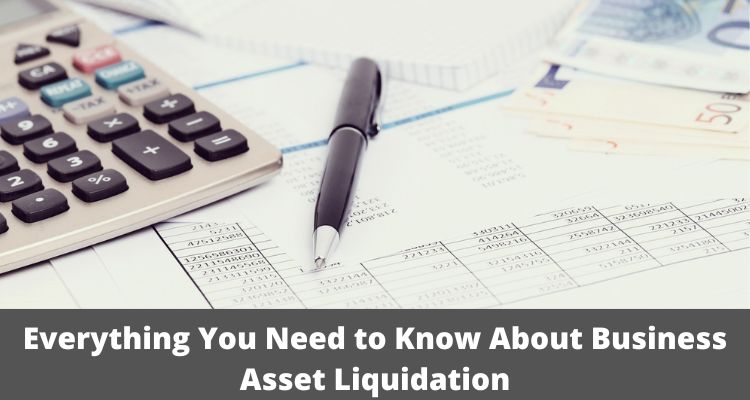Everything You Need to Know About Business Asset Liquidation

Because the business world can be so competitive, not all businesses will be successful. Each year, a large number of companies declare bankruptcy around the globe. You may lose valuable assets such as employees and funds when a business fails. Even if it is difficult to see your efforts fail, you can still recover your assets.
There are reasons why a business has to liquidate its assets and these can be:
- Low cash flow
- Bankruptcy
- Failure to plan for the future
- Bad management
- Disagreements between the partners
Don’t worry, one can do this by Business Asset Liquidation. You can go through this when your company is in financial trouble and unable to pay its debts or bills. This article will cover various aspects of business asset liquidation.
What is asset liquidation?
Liquidation is the selling of a company’s IT inventory, usually at a steep discount, to generate cash. In most cases, a liquidation sale precedes a business closure. The company is closed down once all of its assets have got sold.
Liquidation is the process of selling all the assets to generate cash to pay off creditors or anyone else the company owes money.
A company could liquidate most or all of its inventory as part of a relocation, saving money on the cost of transporting everything to a new storefront. The most significant disadvantage of inventory liquidation is that the timetable for liquidating assets is often short, so the discounts are steep, and the cash earned is much lower than the retail value.
What kind of assets can a company liquidate?
A business has various assets that it can liquidate. Some of the most common include the following:
- Valuable office equipment
- Furniture
- Unused inventory
What are the types of asset liquidation?
Various types of liquidation gets used for a variety of purposes. The two most common types of liquidation are compulsory liquidation and voluntary liquidation by members.
These are below:
Complete liquidation: The process by which a company sells all of its net assets and ceases operations is known as complete liquidation. The business ceases to exist and is no longer a legal entity after complete liquidation. Complete liquidation can refer to either complete voluntary liquidation or complete creditor-induced liquidation.
An example of complete IT and asset liquidation is: A typewriter manufacturer’s creditors force it to liquidate all of its assets.
Voluntary liquidation: Voluntary liquidation occurs when a company decides to close its doors. The decision to liquidate voluntarily may result from the realization that the business is no longer profitable. For example, a typewriter manufacturer may have chosen to liquidate its assets after realizing that the introduction of personal computers meant that the market for typewriters would soon disappear. Voluntary liquidation can occur in two forms: complete voluntary liquidation and partial voluntary liquidation.
An example of voluntary IT and asset liquidation is: A typewriter manufacturer liquidates all of its assets.
What is the process of liquidation?
The liquidation of a company begins with the sale of all IT assets one by one. The decisions get based on the priority and necessity as understood, excluding cash and bank balances.
After the liabilities get repaid, the remaining funds get distributed among the distributors. However, this repayment is in a predetermined order. Priority is for the company’s secured creditors, with the remaining funds used to discharge preferential creditors, such as government taxes and employee salaries.
After the above debts get paid off, the remaining funds will repay the debenture holders, and miscellaneous liabilities get secured by a floating charge on all assets. The unsecured creditors and preference shareholders must get paid next.
The final step is to know whether the funds are in surplus after making all the payments to the creditors. If there is a surplus, the funds get distributed to shareholders. Meanwhile, the shareholders asked to pay up the unpaid share of capital.
Before selling your IT assets you need to back up your data.
Ways and why to backup your data before disposal
There are various reasons why companies should ensure data protection before IT equipment removal. Some of the reasons are:
- Prevention of fraudulent activities such as identity theft or hacking.
- Maintain the integrity of the data.
- Ensuring that data remains confidential when it is about employee identity.
- Blocking any data breaches and cyberattacks.
- Ensuring that the brand remains trustworthy due to data protection rules.
The first and foremost thing is to plan IT equipment removal. The first thing is that you want to remove the data from your services. You can use numerous tools that assist in overwriting the data by having peace of mind when hiring IT equipment removal services.
Now, the final thing is how to sell your business assets..
What are the methods to find the right buyers for your IT assets?
Advertise your sale.
This is one of the old age and the most common method to sell your assets. You can find plenty of websites where you can list the IT assets and target buyers. The advertising methods get determined by the number of assets you wish to sell their value. The assets you sell will know you advertise in trade.
Consider hiring a liquidation company.
You may want to work with a broker or liquidation company to organize the sale, especially if you are selling diverse assets or liquidating all assets and going out of business. The advantage of hiring a liquidation company is that you will work with professionals who have organized and managed numerous liquidation sales. Understand how to organize and manage the sale to get rid of your property while controlling profits to reduce the capital gains you must report on your business’s taxes.
Hiring a professional broker or liquidator also relieves you of a lot of responsibility because you won’t have to worry about running the sale yourself and can concentrate on other aspects of closing your business.
Using a liquidator or broker also allows you to benefit from their valuation experience, formulas, and procedures, which they have developed over time with experience, saving you from having to “reinvent the wheel” by figuring everything out on your own.
What to do after selling your business assets?
Keep a detailed record of your sales.
Create a written record for each asset you sell including the date the item gets sold and the amount you get paid. This information will be required to calculate the capital gain or loss report on your state and federal taxes.
Your records should include a description of each asset sold, the date it gets sold, the sales price, and the asset’s accumulated depreciation since it got purchased.
To determine the total depreciation for each asset, you may need to go through several years of tax returns. If you have a tax consultant or accountant, they will usually provide you with this information.
Include any selling fees or advertising costs associated with the sale of that specific asset in addition to this information.
Summing it up
So, here is everything you need to know about business asset liquidation. Businesses should make a habit of backing up their data ahead of time. And how you can take care of used equipment by hiring a professional IT asset and liquidation service.





